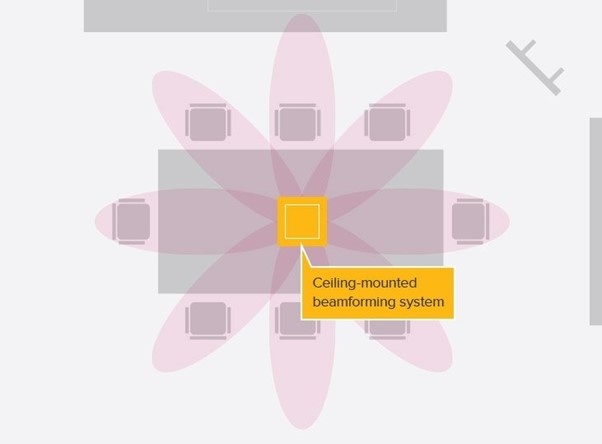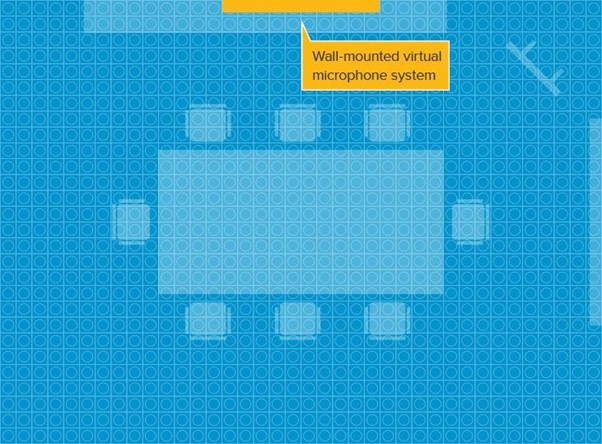
Can You Move Closer To The Microphone?
Does your meeting room use Omnidirectional or beamforming mics? In which case, this is a question you will hear a lot from people on the far end of your calls.
Picture the scene. You and some colleagues are in a meeting room. Due to social distancing, some people have sat away from the table. The beamforming microphone array in the ceiling has been carefully (and expensively) configured to pick up sounds from the seats by the table (pre-Covid).

The system has not been reconfigured to allow for the new social distancing rules, so those participants who are sat away from the table have options – stay quiet, shout, or move closer (er…social distancing).
Now, back in the day, when I was promoting older technologies, we would tell customers that the way to get the best audio was to be as close as possible to the mic.
Never has this been more true and less practical than when we return to the office after Covid.
Alternatively, if you want better audio coverage, add more mics.
Imagine adding a second ceiling mic to the room shown above. This would definitely improve the coverage, but would still leave dead spaces. In order to cover all areas of the room, you would need 4 or 6. Technically, this is possible, assuming there is nothing else in the ceiling (air conditioning etc). But at what cost? By the time you’ve paid for the mics, the additional audio processors, installation and custom programming, the costs become prohibitive.
This solution may be fine in the boardroom, but companies have to address social distancing in all shared spaces, so blowing the budget on a single room is not a sensible investment.
So, the question is, how do we have Covid safe meetings, with audio the works for all participants, without having to spend a fortune?
Thankfully, the answer is simple.
If you need more microphones to ensure you pick up everyone in the room. How about a system that gives you over 8000!
Introducing the HDL range from Nureva. A single microphone / speaker bar that includes new patented ‘Microphone Mist’ technology, covering the room with over 8000 ‘virtual’ microphones, enabling realistic audio from any part of the room (including under the table).

No dead zones, just beautifully clear audio without having to shout.
Simple to install, no programming required (the HDL series will automatically configure to the room acoustics), the HDL series will cover rooms of all sizes up to 15x9m.
No programming, no additional control devices, no expensive maintenance contracts.
This must be expensive I hear you cry? Granted, the cost of the unit is a little more than a good quality beamforming mic, but when you factor in the cost of installation and programming by an audio specialist engineer, the savings are considerable.
But surely a single device can’t match the audio processing power of a custom solution? The HDL series has massive processing power (15,000 MIPS), focussing on human voices and removing annoying background noises.
Make no mistake, this is a game changer for meeting room audio.
Don’t believe it? Speak to your Ascentae account manager for details and to arrange a demo. It takes 15 minutes and will revolutionise your thinking about meeting room audio.
With the HDL series by Nureva, the only person telling you to move closer will be Phyllis Nelson (ask your parents).
Author: Nick Palmer, Product Manager at Ascentae